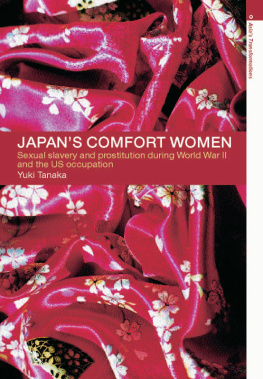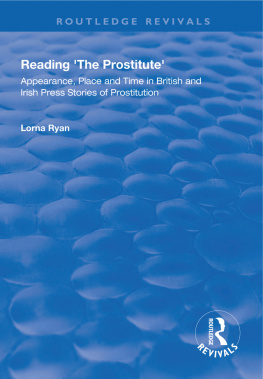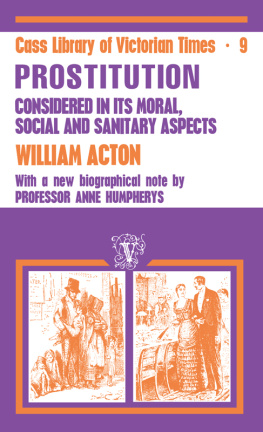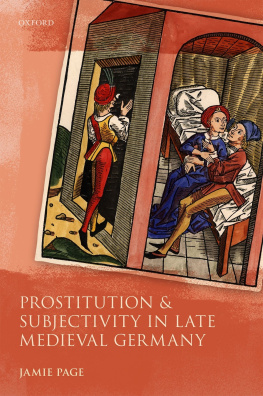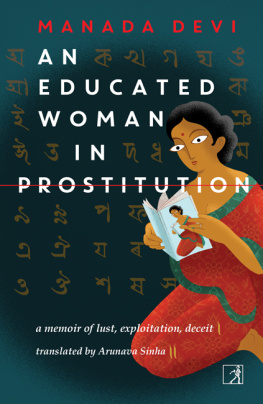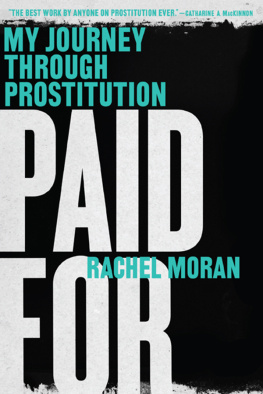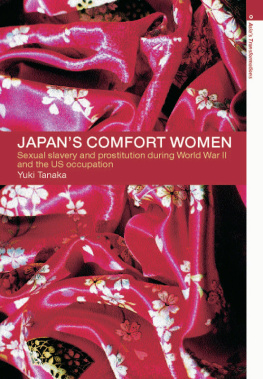Chaste Wives and Prostitute Sisters
Chaste Wives and Prostitute Sisters
Patriarchy and Prostitution among the Bedias of India
Anuja Agrawal
First published 2008
By Routledge
912 Tolstoy House, 15-17 Tolstoy Marg, New Delhi 110 001.
Simultaneously published in UK
by Routledge
2 Park Square, Milton Park, Abingdon, Oxon OX14 4RN.
Routledge is an imprint of the Taylor & Francis Group, an informa business
Transferred to Digital Printing 2007
2008 Anuja Agrawal
Typeset by
Bukprint India
B-180A Guru Nanak Pura, Laxmi Nagar,
Delhi 110 092.
All rights reserved. No part of this book may be reprinted or reproduced or utilized in any form or by any electronic, mechanical, or other means, now known or hereafter invented, including photocopying and recording, or in any information storage or retrieval system, without permission in writing from the publishers.
British Library Cataloging-in-Publication Data
A catalogue record of this book is available from the British Library.
ISBN 0-415-43077-1
This book is dedicated to Shri Ramsanehi
Founder of Vimukt Jati Abhyudaya Ashram, Morena
In a primarily field-based study, I believe one owes the most to those who are the focus of ones study. I wish to express my gratitude to all members of the Bedia community who made this study possible despite their usually resistant stance towards such enterprises. I respect their desire to remain anonymous and therefore do not name them here individually. But I would especially like to thank Shri Ramsanehi of Abhyudaya Ashram, Morena who was a great source of information, learning, and inspiration for me.
Besides the members of the community, a very large number of people made the fieldwork for this study possible. I owe a very special debt to Chandrakala Behanji in Bharatpur without whom most of the fieldwork on which this book is based could not have been done. Among others to whom I owe a debt are Professor K. K. Mukherjee of Gram Niyojan Kendra, Ghaziabad; Liaqat Bhai from Samriddhi, Barabanki and Bharatpur; Mr. Pramod Sharma and Ms. Renu Sharma from Gwalior and Bhopal; Birendra Singh Yadav and Rajendra Singh in Morena; Mr. N. K. Berwa in Jaipur; Lalita and Shakuntalaji from Joint Womens Programme, Delhi; Champa Behan from Sagar, Madhya Pradesh; and Ajit from Gudia, Varanasi. Many others to whom I owe thanks remain unnamed.
I also wish to thank the entire Cheema family, but especially Anita and Vimla Cheema, for providing me a home away from home during most of my fieldwork. In them I found my extended family.
This is a revised version of my Ph.D. thesis which was supervised by Professor Dipankar Gupta. Throughout the course of this study, he was a very inspiring and thorough supervisor apart from being a great source of encouragement and support to me. I cannot thank Professor Gupta enough for bearing with all my idiosyncrasies and for letting me conduct this research with immense autonomy. Without his able guidance and active as well as continued interest in my research, my thesis would not have become the book it is now.
I would also like to thank Professor Patricia Uberoi and Professor Rajeswari Sunder Rajan for their contributions in making this a successful endeavor. I thank Professor Jonathan Parry who was my external supervisor for the part of my research that was done while I was at the Department of Anthropology, LSE, for his detailed reading of earlier drafts of this work without which it would not have found its present shape. The thesis-writing seminars I participated in at the London School of Economics were crucial in shaping many of the ideas that have found their way into this book.
I thank the Commonwealth Scholarship Commission in the UK for granting me a scholarship which facilitated the part of this work which was carried out at the LSE.
I would like to thank the ICSSR for a small contingency grant which facilitated part of the fieldwork for this study. I must also thank the Lady Shri Ram College for Women, where I was teaching when this work commenced, for granting me study leave for a period of three years that was an absolute must for this work to be done.
I wish to thank Esha Bteille for giving the final push that I needed to make my thesis into a book. I also wish to thank the entire Routledge team, especially Omita, Nilanjan and Jaya, for the help they provided me in preparing the manuscript of this book.
Last, but not least, I wish to thank Ravi, my better half, for his immense patience and untiring support. Most of all, I am grateful to him for always keeping my morale high and faithfully abiding by my various dictums including the crucial one which forbade him ever to express any apprehensions about this enterprise. Without Ravi, I would not have had the courage to undertake the research of which this book is a culmination.
As in many parts of the world, the prevalent perception of prostitution in the Indian subcontinent is that women are either forced into this trade or that they adopt this strategy willingly, albeit in extreme circumstances, to make ends meet. Even though the complicity of the womens family in trafficking them is sometimes recognized, no special significance is attached to it.
See, for instance, Chakraborty (1963: 2627) and Shalini and Lalitha (1996: 37).
For instance, Trawick (2003: 1164) has suggested that female prostitution must be named as a traditional Indian outside-family occupation.
Interestingly, some feminists have also adopted such a view, albeit in their opinion this ostensible break with the familial institution is a positive attribute of womens engagement in prostitution. They thus portray women in prostitution as transgressive and subversive of the dominant social order. Following Oldenburg (1991), it has even become commonsensical for some activists as well as those within the academia to consider the lifestyle of such women as necessarily opposed to the dominant patriarchal institutions. At either of these extremes, the possibility of prostitution being a family economy appears remote.
See Seshu (1997) and Gangoli (2000/2001, 2002), for instance.
trafficking of women and children into prostitution. See Sleightholme and Sinha (1996). But largely, the politics of prostitution in the Indian context is dominated by the view that women in prostitution are victims of unscrupulous social elements and abstract social processes.
Although the discourse on prostitution would lead us to be skeptical of such a possibility, there are increasing reports of engagement of women in prostitution with familial consent and complicity in South and South East Asia, especially among the rural poor.criminal tribes by the colonial state in the late nineteenth and early twentieth centuries. In north India, the Bedias are the best known for pursuing prostitution as a familial occupation. In this study, I have primarily focused upon their practice as an example of the articulation of prostitution with the kinship practices and marriage economy of a social group for a detailed sociological exposition of this unexplored phenomenon.


